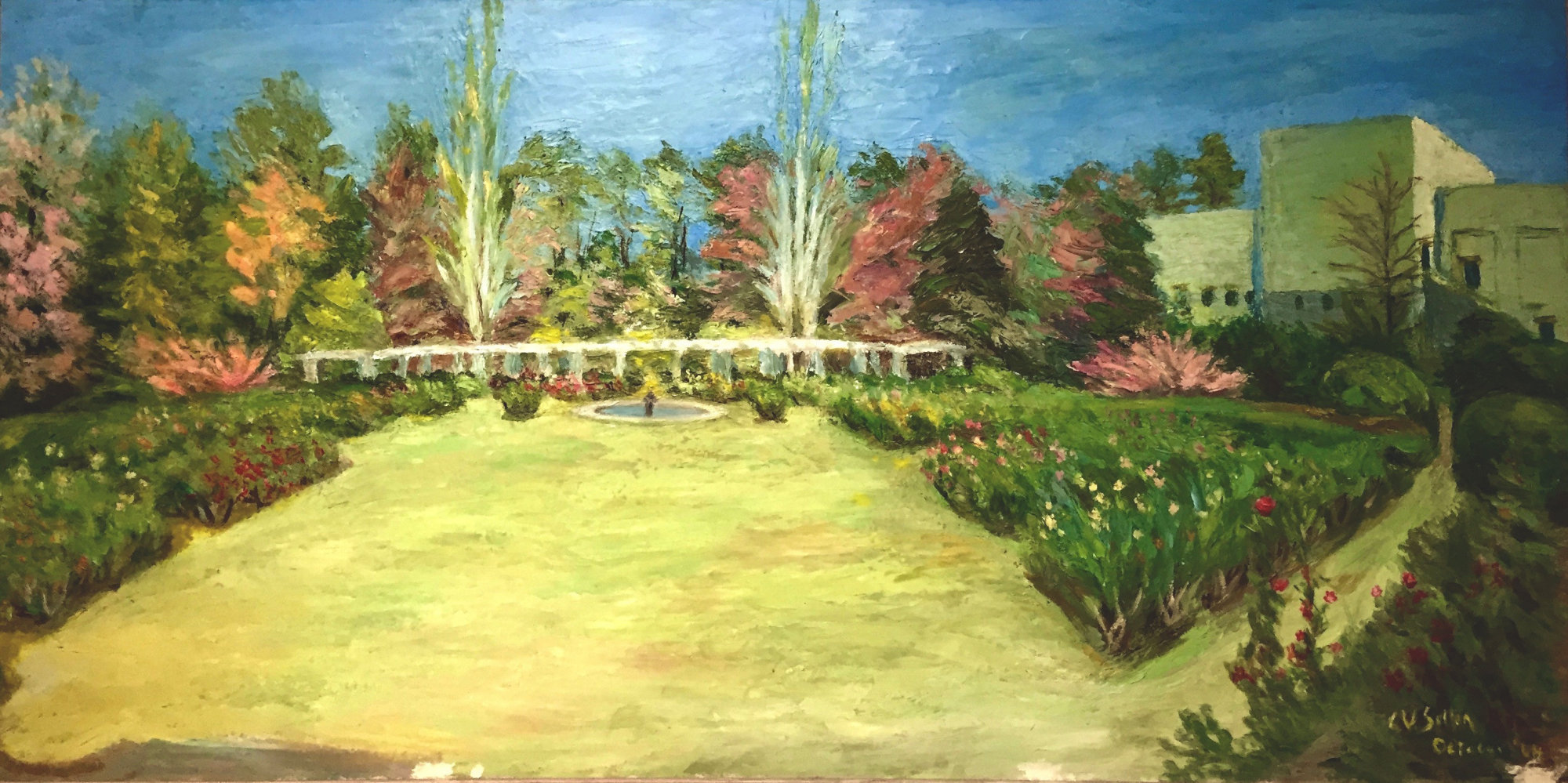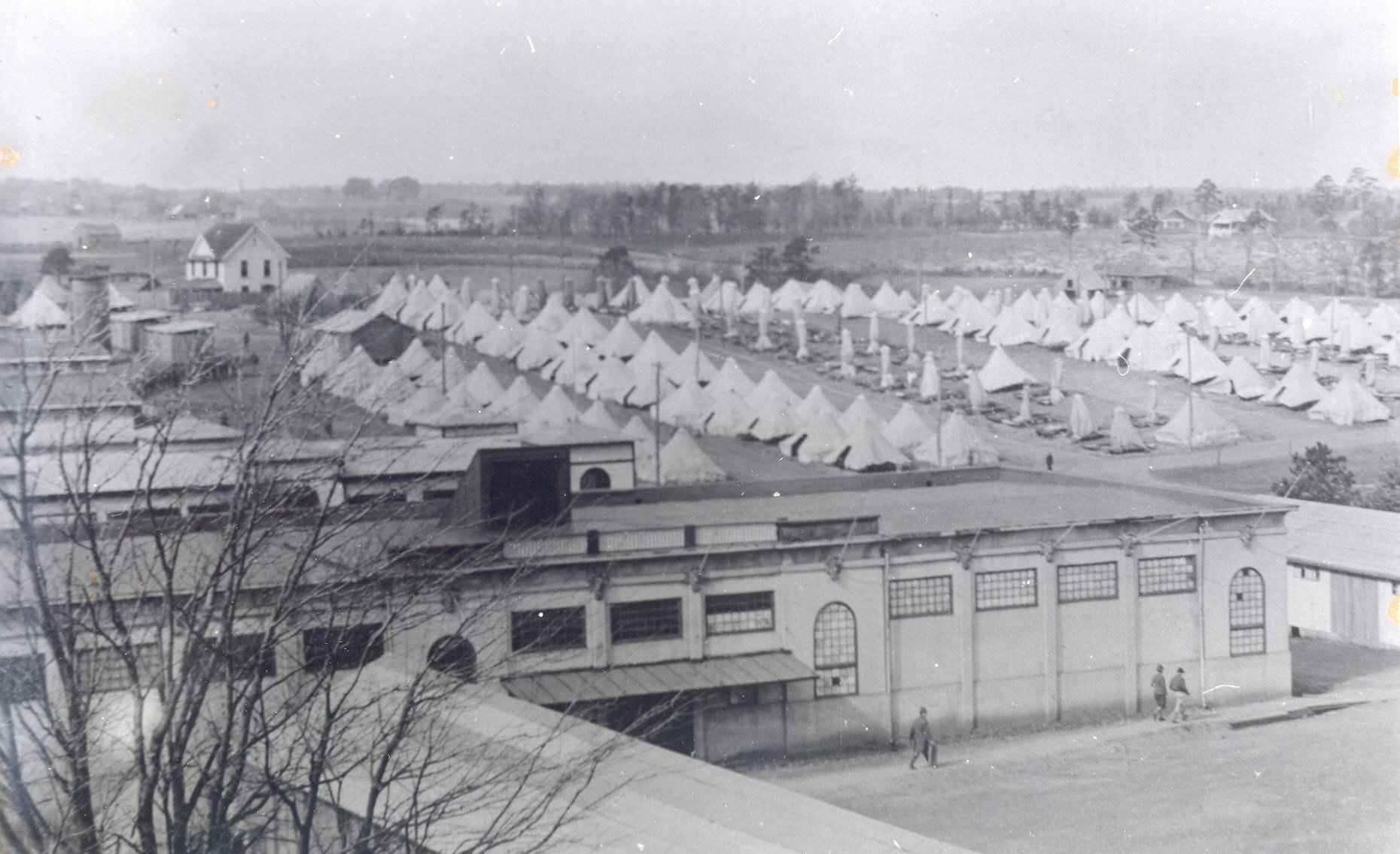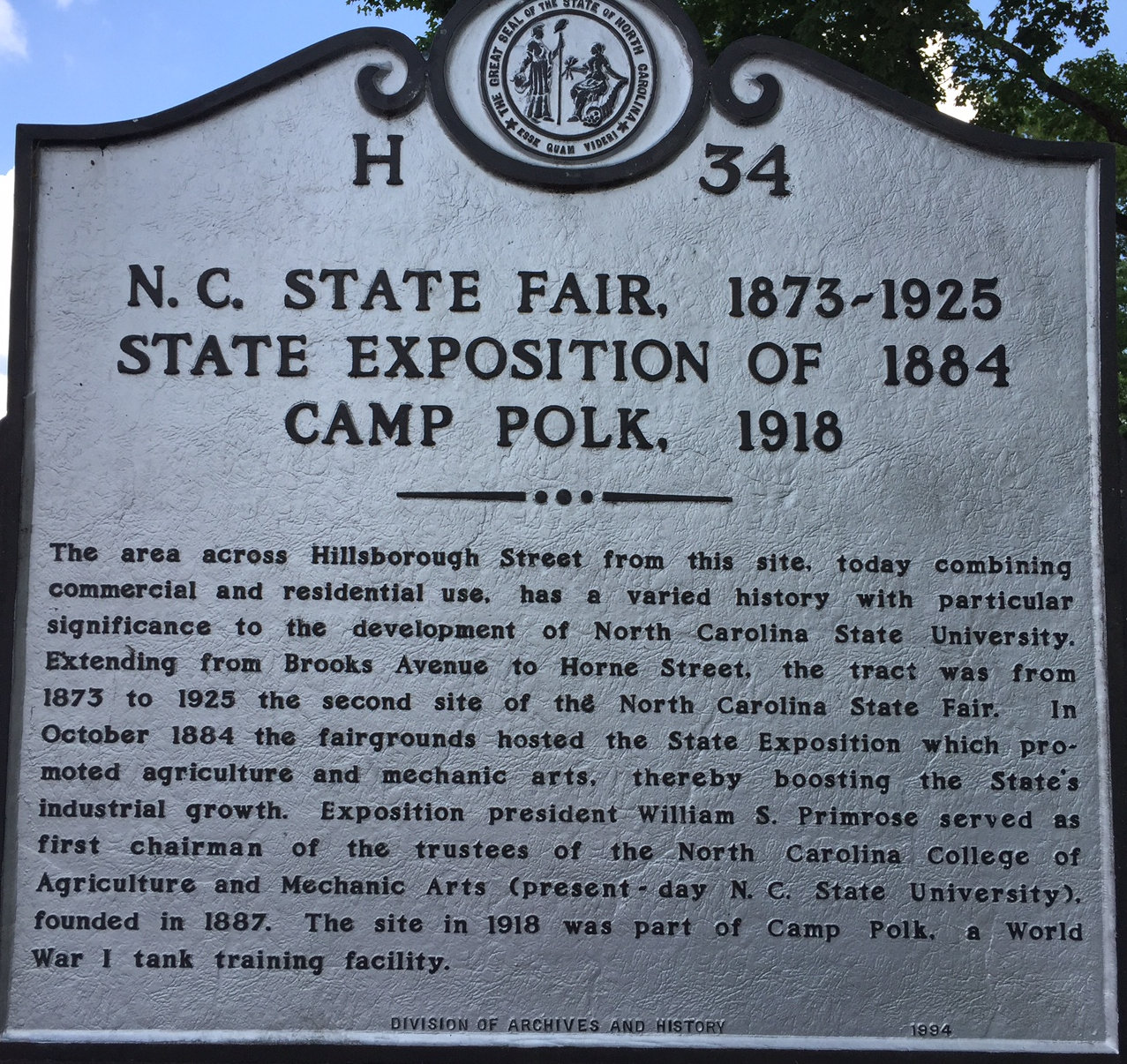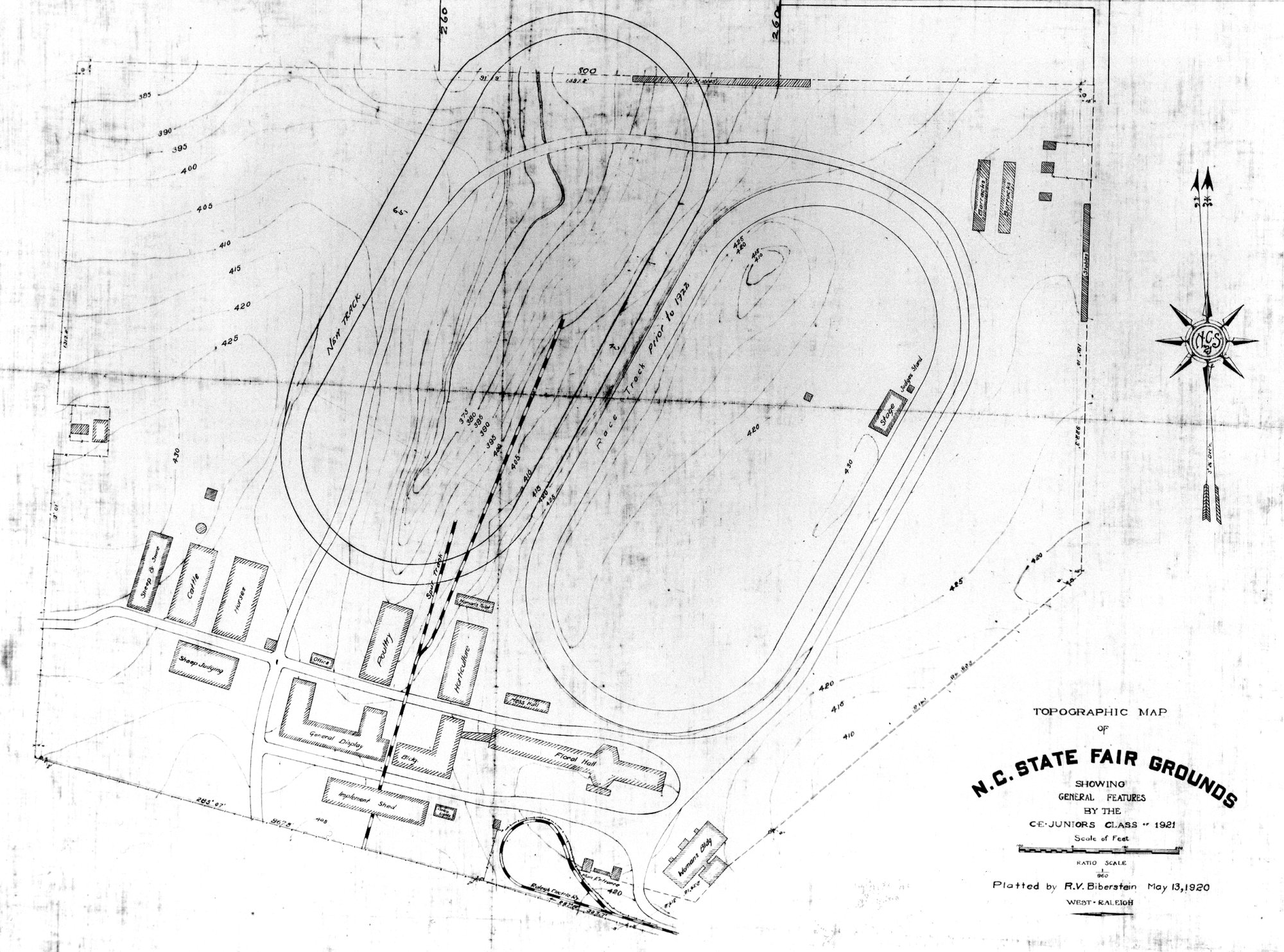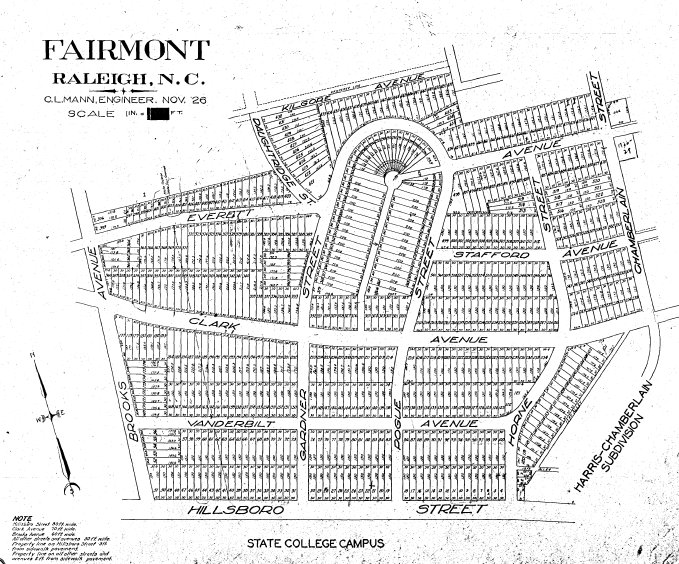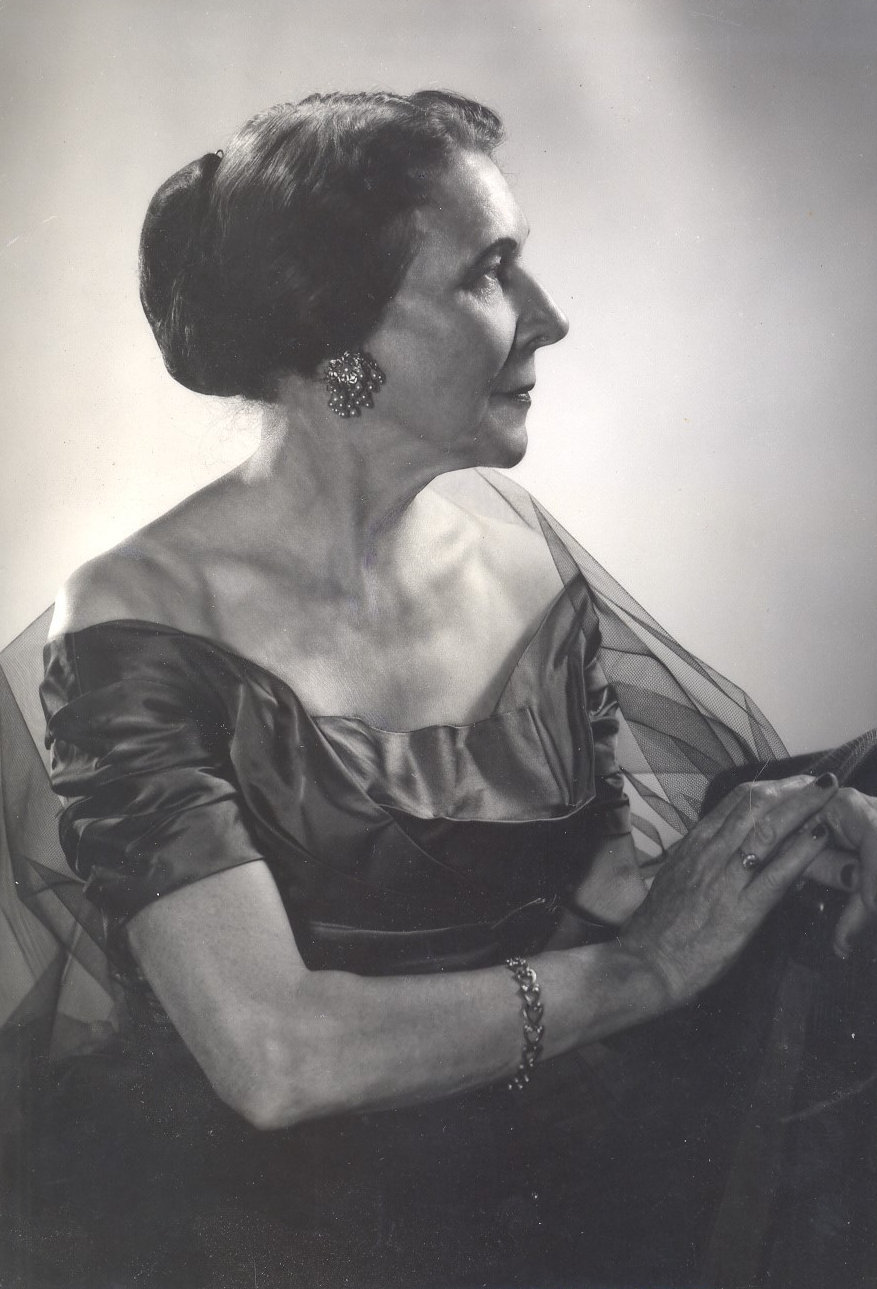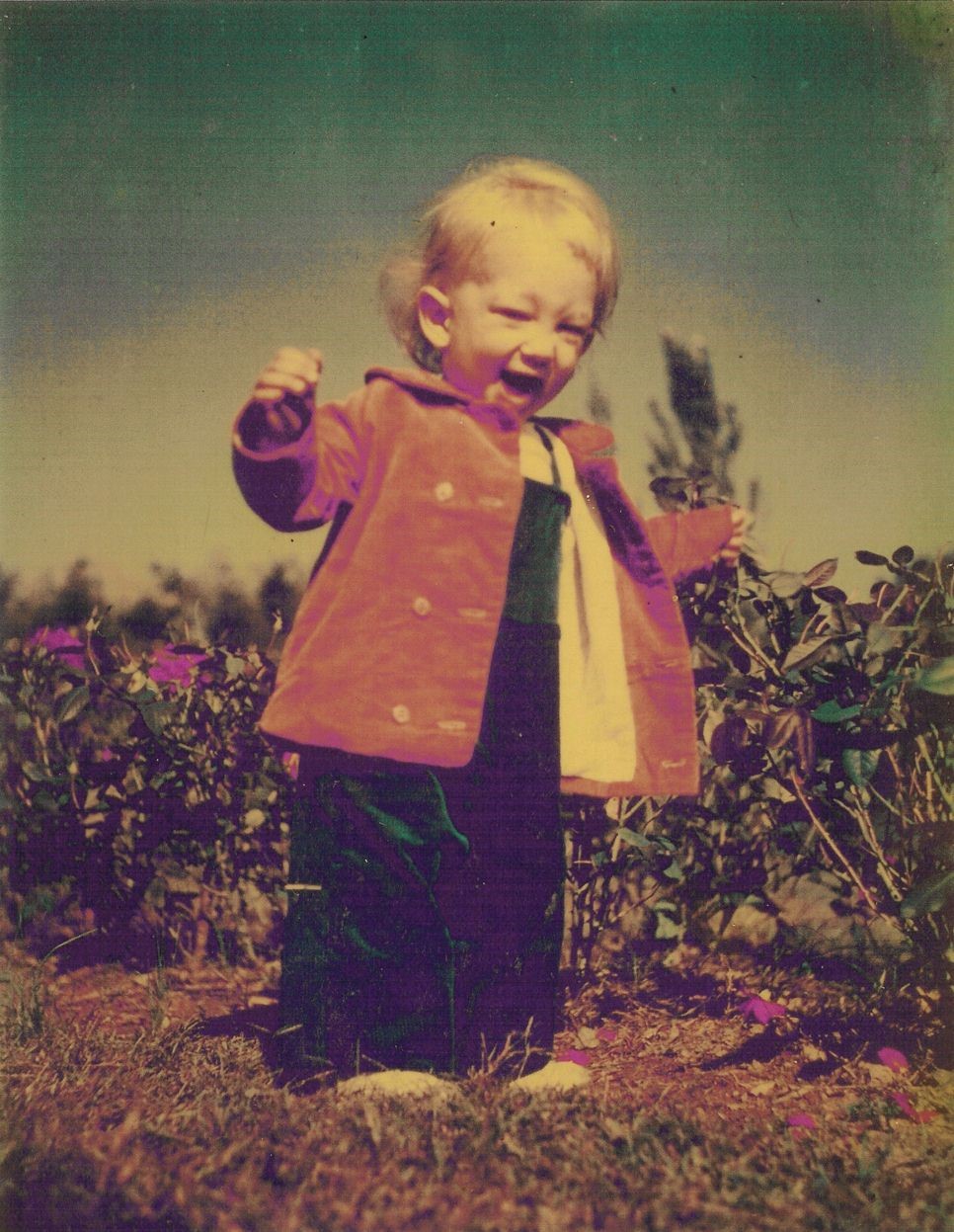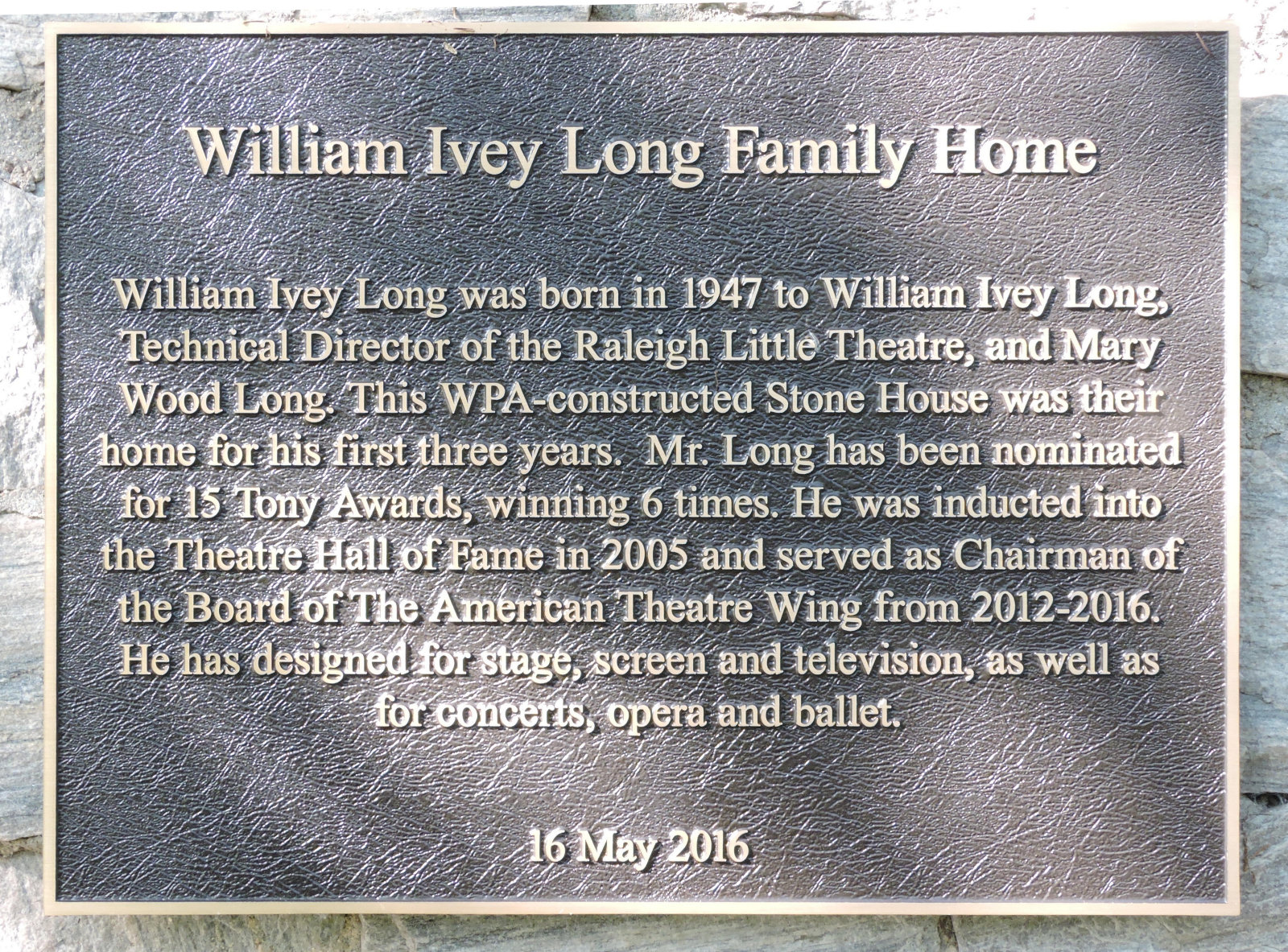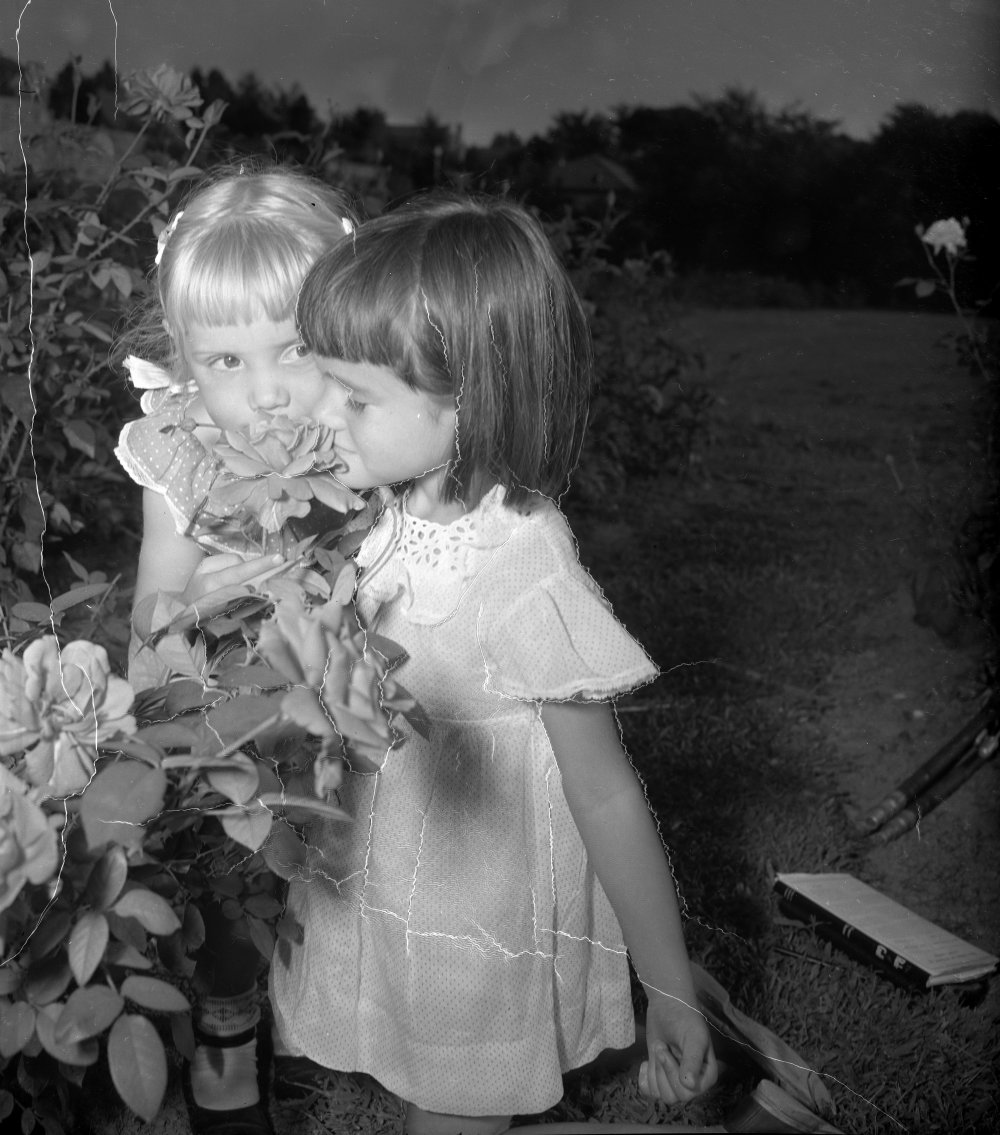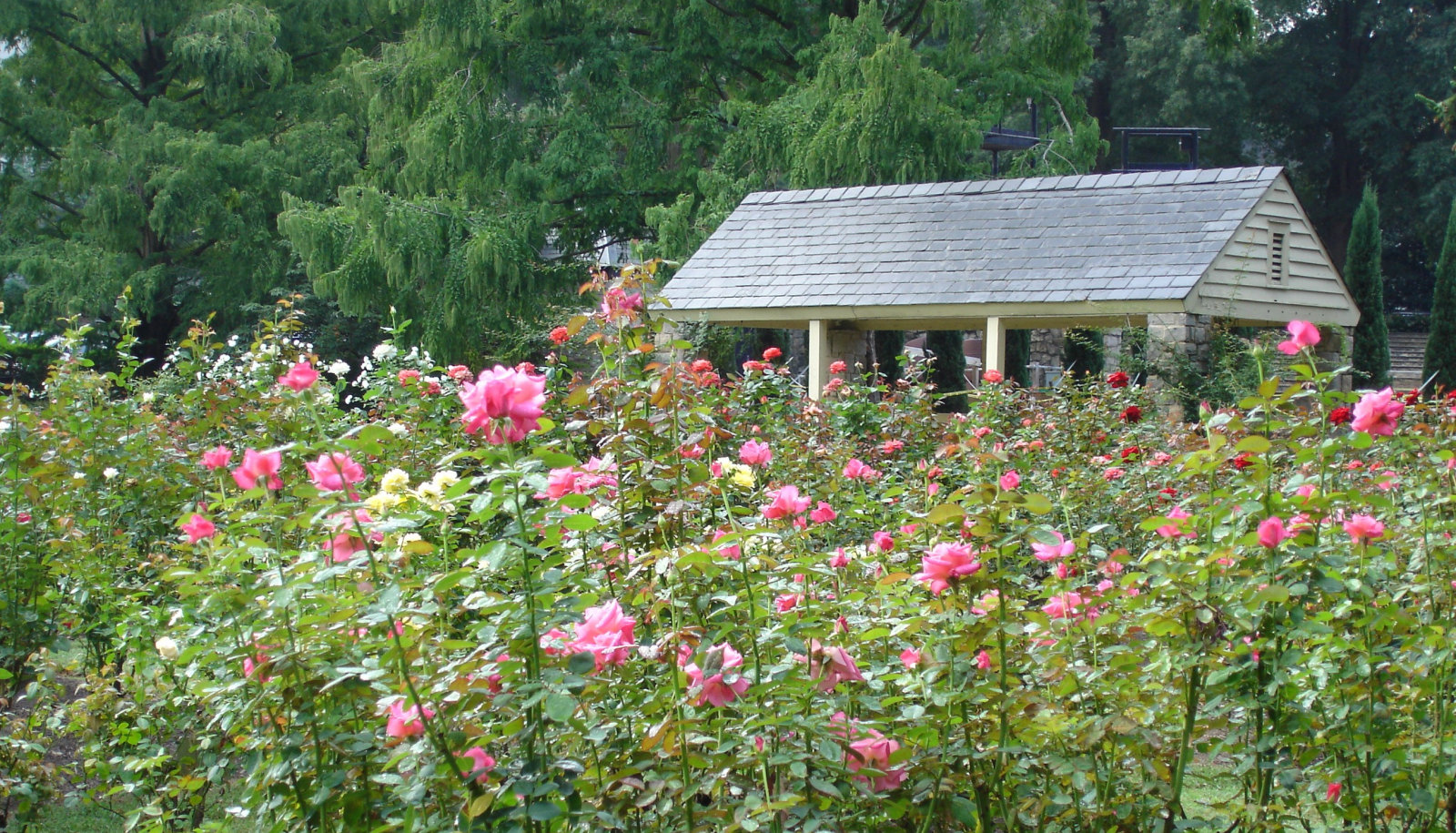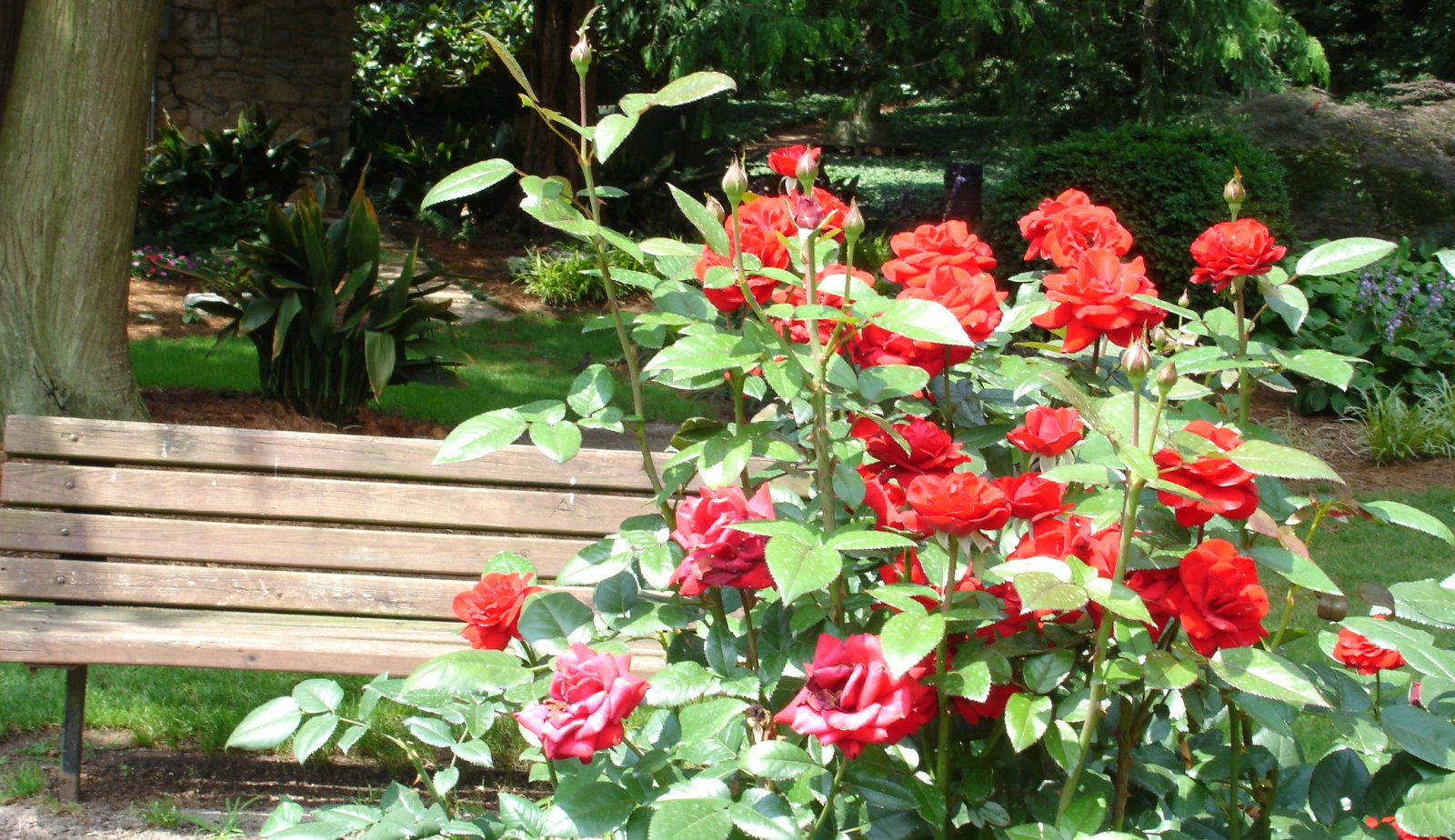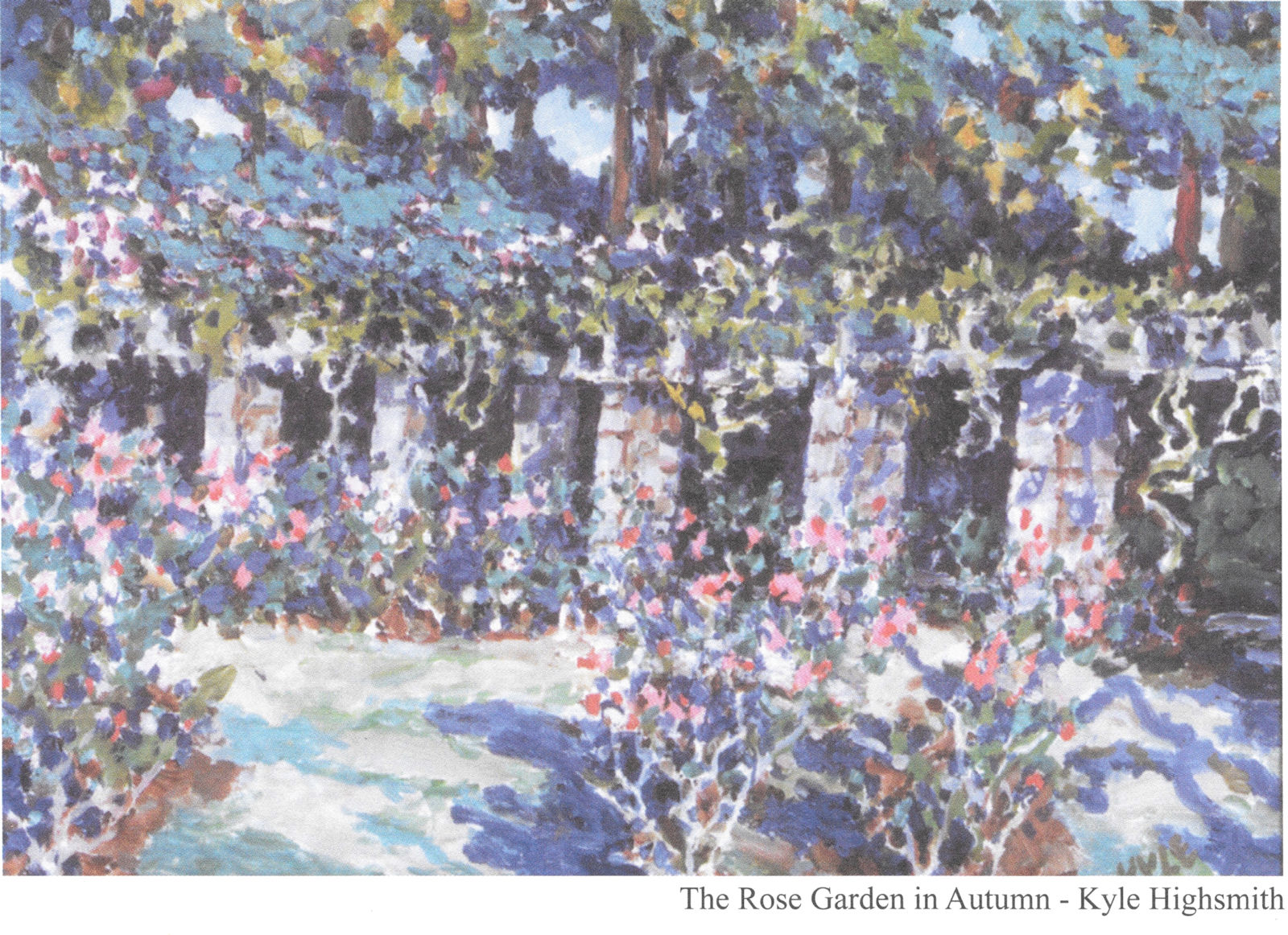A History of The Raleigh Rose Garden
By Shelley Crisp, MFA, PhD, RLT Board of Directors President, 2016-2017
The long history of a garden — the lovely blossoms, the losses to drought or blight or frost, the venerable trees— begins with a blank slate of earth that becomes, no matter how many years or hands or cultivars have passed, what thrives just now. For The Raleigh Rose Garden (sometimes called The Raleigh Municipal Rose Garden) at Raleigh Little Theatre, that history began with the vision of a theatre and an amphitheatre, the gleam in the eyes of thespians and philanthropists from the 1930s to plan and build what is now one of North Carolina’s oldest cultural institutions.
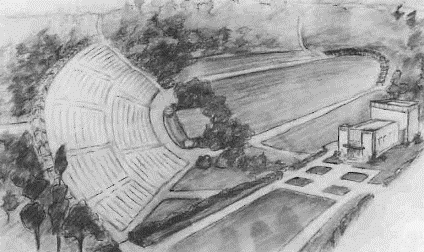
Architect’s 1938 sketch of the Raleigh Little Theatre campus on the grounds of the old State Fair race track ravine, found in
“Chapter Two: A Permanent Home,” Guy Munger’s Curtain Up! Raleigh Little Theatre’s First 50 Years
The chronicle of that complex challenge has been well-documented in Guy Munger’s Curtain Up! Raleigh Little Theatre’s First 50 Years. But amid the costumes and playbills, there is not much there beyond the beginning to record the story of Raleigh’s beautiful and beloved Rose Garden— originally designed to be a humble “grass panel” surrounded by flower terraces and an arboretum.
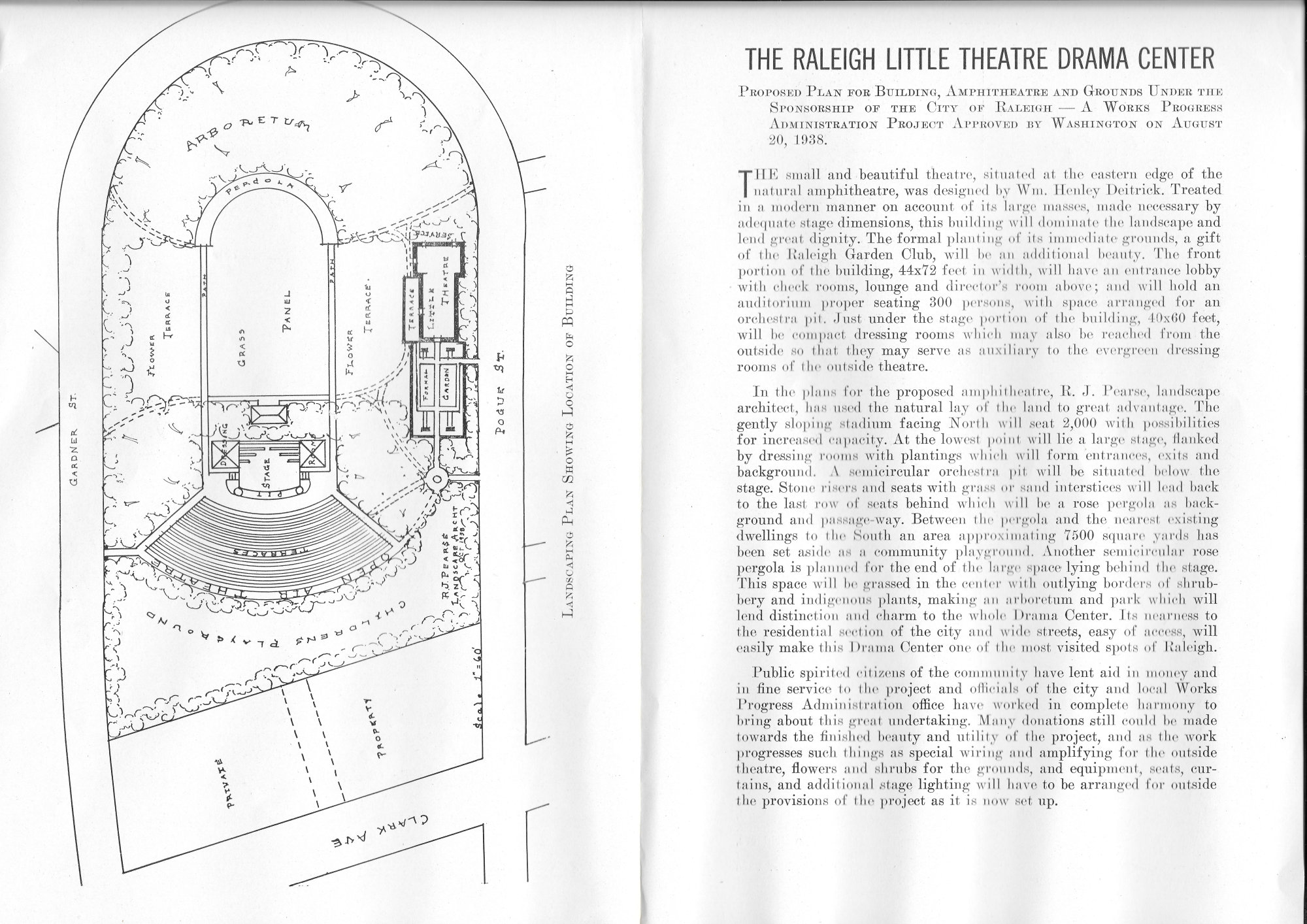
The 1938 Proposal for The Raleigh Little Theatre Drama Center
Image courtesy of Raleigh Little Theatre Archives
The proposal reads as follows:
Proposed Plan for Building, Amphitheatre and Grounds under the sponsorship of the City of Raleigh – A Works Progress Administration project approved by Washington on August 20, 1938.
The small and beautiful theatre situated at the eastern edge of the natural amphitheatre, was designed by William Henry Dietrich. Treated in a modern matter on account of its large masses, made necessary by adequate stage dimensions, this building will dominate the landscape and lend great dignity. The formal planting of its immediate grounds, a gift of the Raleigh Garden Club will be an additional beauty. The front portion of the building, 44 x 72 feet in width, will have an entrance lobby with check rooms, lounge and director’s room above; and will hold an auditorium proper seating 300 persons, with space arranged for an orchestra pit. Just under the stage portion of the building, 40 x 60 feet, will be compact dressing rooms which may also be reached from the outside so that they may serve as auxiliary to the evergreen dressing rooms of the outside theatre.
In the plans for the proposed amphitheatre R. J. Pearse, landscape architect, has used the national lay of the land to great advantage. The gently sloping stadium facing north will seat 2,000 with possibilities for increased capacity. At the lowest point will lie a large stage, flanked by dressing rooms with plantings which will form entrances, exits and background. A semicircular orchestra pit will be situated below the stage. Stone risers and seats with grass or sand interstices will lead back to the last row of seats behind which will be a rose pergola as background and passageway. Between the pergola and the nearest existing dwellings to the south and area approximating 7500 square yards has been set aside as a community playground. Another semicircular rose pergola is planned for the end of the large space lying behind the stage. This space will be grassed in the center with outlying borders of shrubbery and indigenous plants, making an arboretum and park which will lend to distinction and charm to the whole Drama Center. Its nearness to the residential section of the city and wide streets, ease of access, will easily make this Drama Center one of the most visited spots in Raleigh.
Public spirited citizens of the community have lent aid in money and in fine service to the project and officials of the city and local Works Progress Administration office have worked in complete harmony to bring about this great undertaking. Many donations still could be made towards the finished beauty and utility of the project, and as the work progresses such things as special wiring and amplifying for the outside theatre, flowers and shrubs for the grounds, and equipment, seats, curtains, and additional stage lighting will have to be arranged for outside the provisions of the project as it is now set up.
Early Days: The State Fair Grounds and Camp Polk
A quick history of the land begins in 1872 when Sallie E. Brown sold a parcel of land between Hillsborough, Horne, and Brooks to the North Carolina State Agricultural Society for a fairground to be relocated from east of the Capitol; in 1873, Timothy Lee and his wife also sold parcels of land for the new fairgrounds. From 1873-1925, the N.C. State Fair Ground occupied much of the area between the current theatre complex and Hillsborough Street, where State College formed a natural border. It was a perfect, if temporary, and patriotic site for Camp Polk in the years of World War I, providing excellent topography for tank maneuvers.
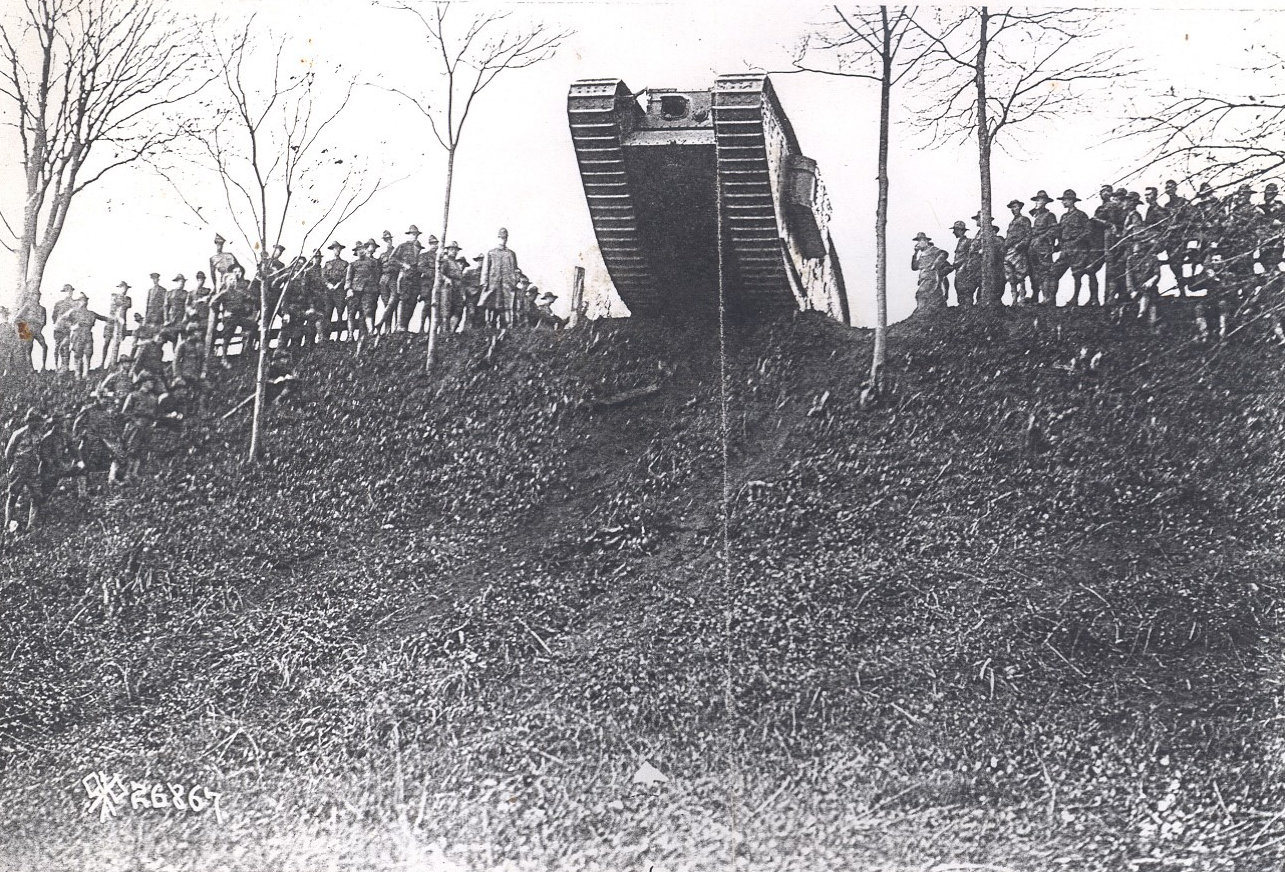
Tank demonstrations in what would later become The Raleigh Rose Garden
Image courtesy of the State Archives of North Carolina
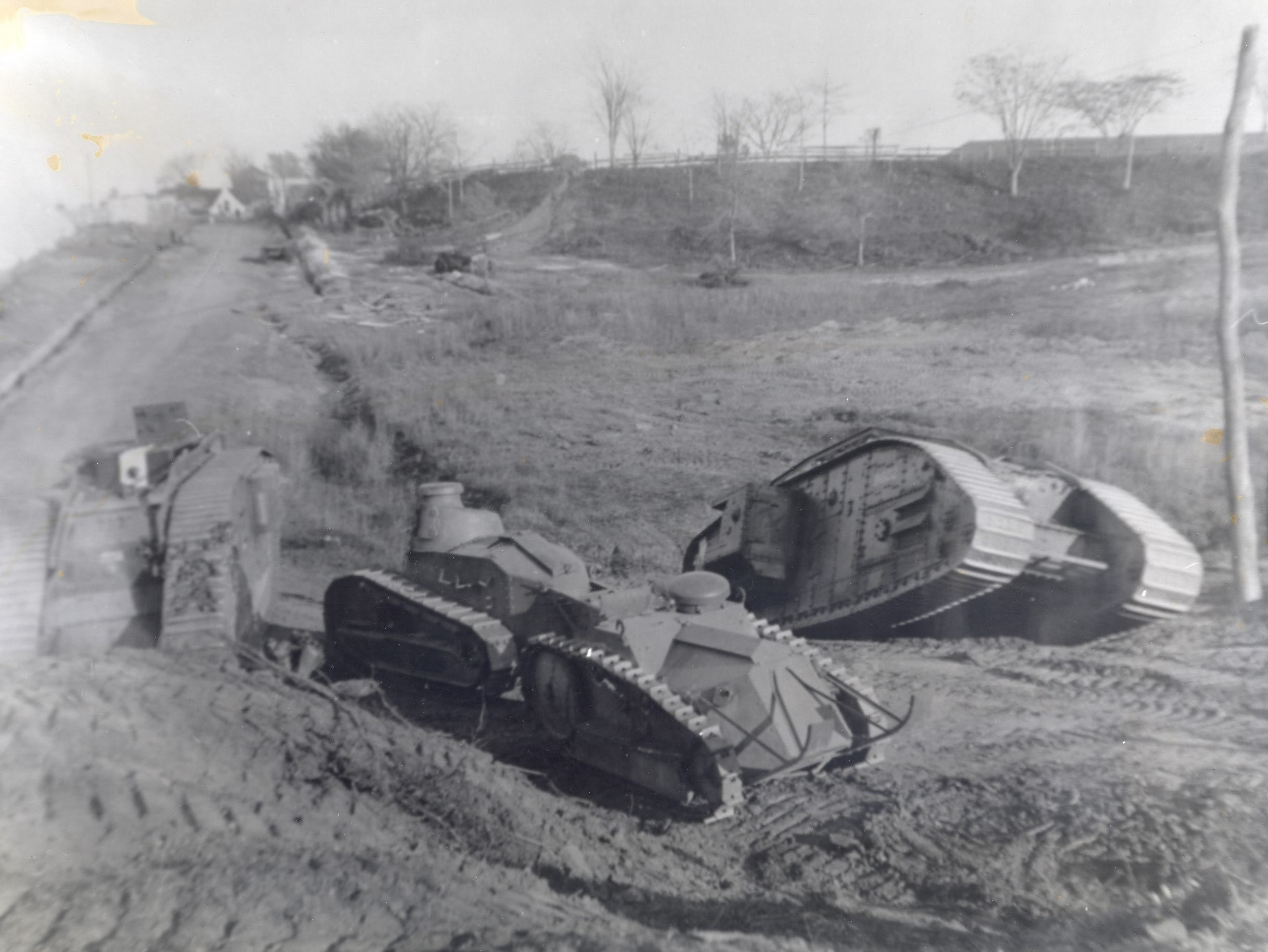
Tank demonstrations in what would later become The Raleigh Rose Garden
Image courtesy of the State Archives of North Carolina
By 1920, there were numerous structures and finally not one, but two racetracks. The addition of the second track, at the suggestion of Mrs. Edith Stuyvesant Vanderbilt of Asheville, then President of the Agricultural Society, proved a disaster.
Suburbs and City Parks
Unable to pay off the mortgage assumed to pay for the track, the Society was forced to sell the property. It was then divided up and sold as one of Raleigh’s newer trolley-car suburbs, Fairmont, with streets named after the board members of the Agricultural Society—hence Vanderbilt and Pogue Streets, for example. A November 1926 real estate flier showed the area completely divided into suburban plots.
The city bought at auction the parcels now identified as the Isabella Cannon City Park and The Raleigh Rose Garden and Raleigh Little Theatre. Since then those sites have always been city-owned. One theory holds that the muddy hole at the center of the racetrack, soon designated to be sunken gardens, contained an underground spring that made the area unsuitable for home-sites.
Legend has it that Mrs. Cantey Venable Sutton, the tenacious mastermind behind the 6.5-acre theatre complex, had long had a rose garden in mind and proceeded to get it underway once the amphitheatre and theatre building were complete. Under her direction “an unsightly clay pit that was a tangle of red mud and weeds” became one of the country’s showcase rose gardens with over 60 formal beds of roses, including floribunda, grandiflora, hybrid tea, miniature, shrub, and climbing roses. In addition there are perennial beds and hundreds of established shrubs and trees, an arbor, a covered shelter, assorted picnic tables and benches, and a fountain to offer visitors a source of delight and inspiration any day of the year.
The theatre complex began its run in June 1939 with a performance in the amphitheatre of Martha, even though the facility wasn’t dedicated until September 1940. Between the opening act and the official dedication, the city hired landscaper Arnold Peterson to supervise plantings for both theatres and the “sunken gardens.” Sutton asked “Raleigh housewives to donate shrubbery” for what “will someday be a showplace of the city,” and plant material was donated by garden clubs, nurseries, and individuals from across the state. Under the supervision of one of Raleigh’s most famous gardeners, Elizabeth Lawrence, the front of the theatre building was graded, and the area was planted with trees—given by the Raleigh Garden Club—and bulbs and shrubs.
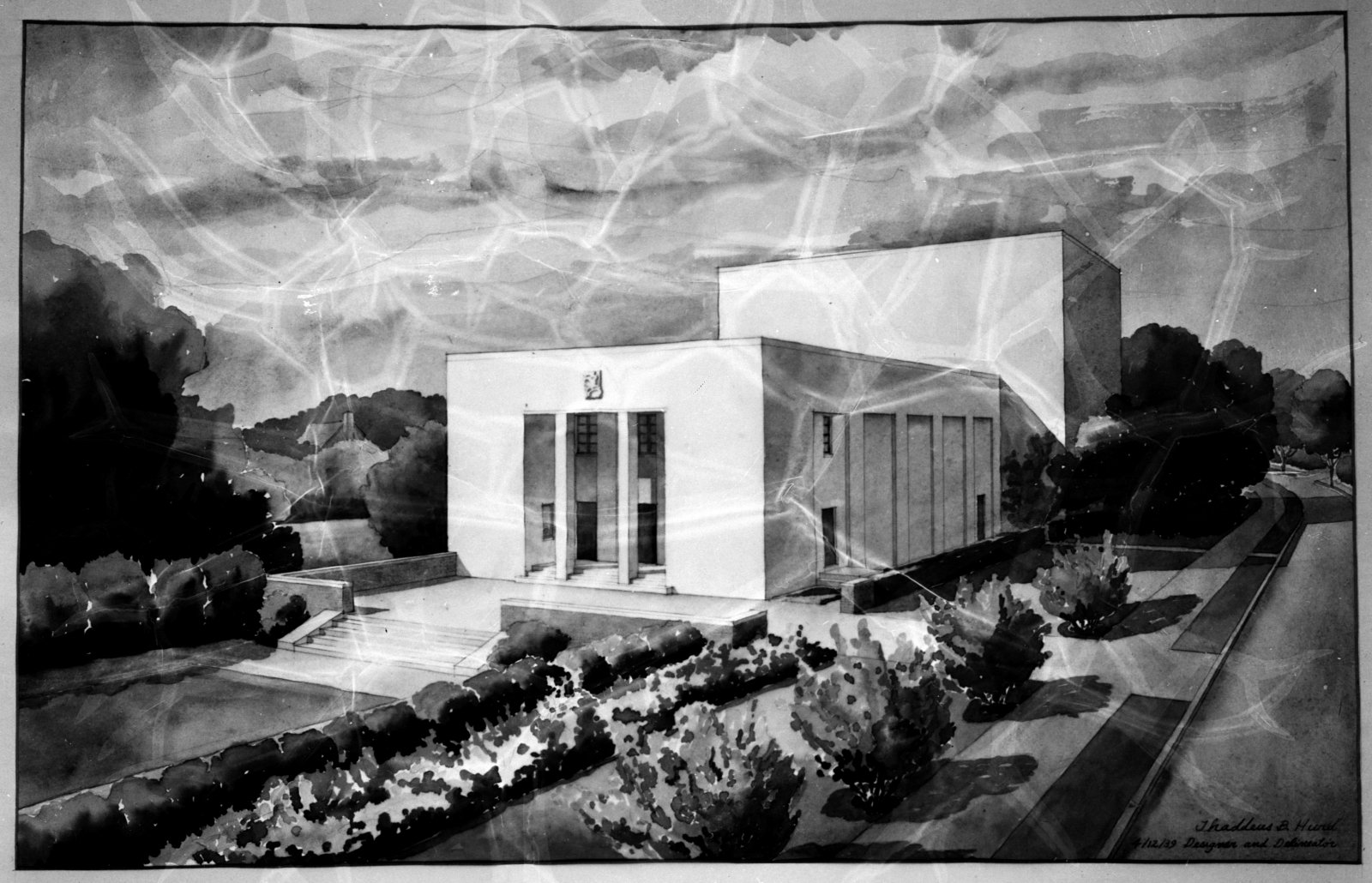
1939 Artist’s Concept of Raleigh Little Theatre
Image courtesy of the State Archives of North Carolina
A year later, drought killed most of the original plantings for the building foundations, so another call went out for contributions to replant the grounds. By 1945, after the war years and under much protest, the City of Raleigh’s Parks and Recreation Commission considered converting part of the RLT complex into tennis courts, using the basement area of the theatre building for shower and dressing rooms. Fortunately, the vision of a garden complete with arboretum prevailed, and in 1947 Sutton, as head of the Rose Garden Committee, sent to the Raleigh City Council a formal request to establish the garden and provide maintenance. The city budgeted $1,600 for the first year and $900 for the second, and landscape architect R. J. Pearse mapped out 250 x 132 feet for rose beds in the previously labeled “grass panel” in the center of the garden.
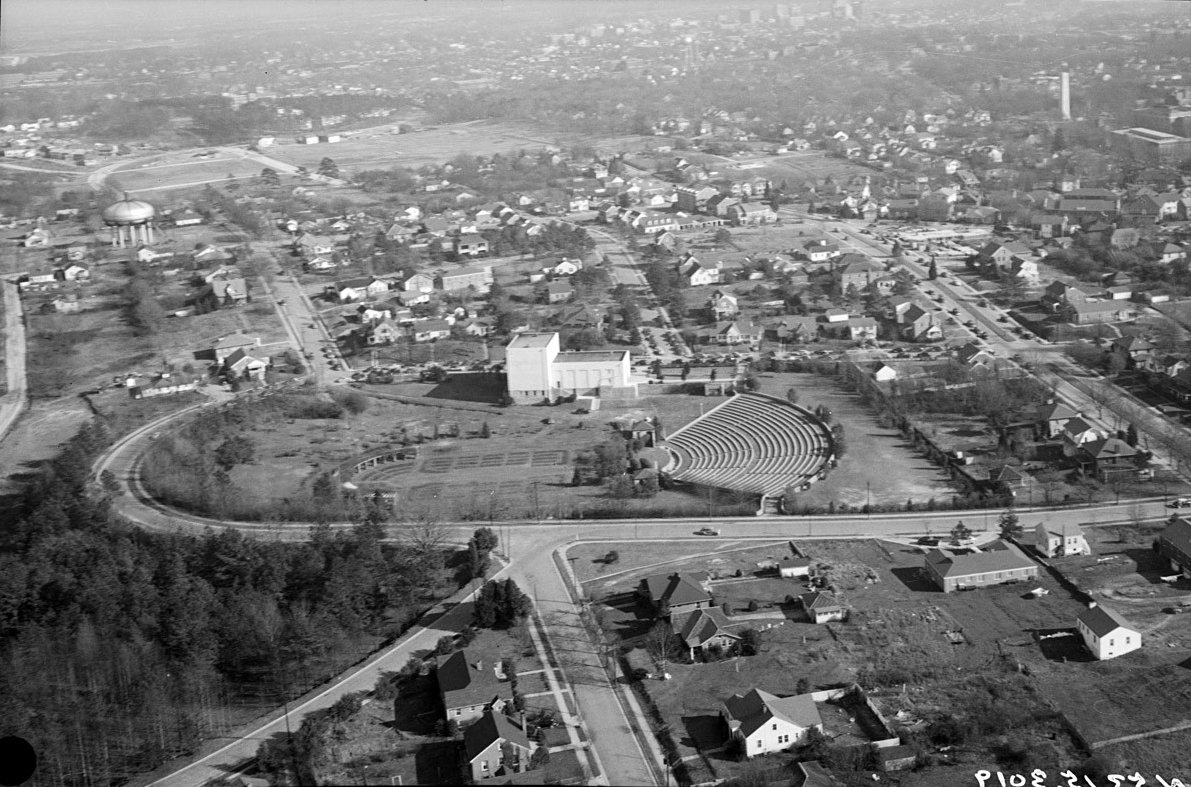
Aerial view, Raleigh Little Theatre and site of Rose Garden, Raleigh, NC, February 11, 1949
From the Albert Barden Collection, North Carolina State Archives
The garden, as it developed, was not without residents, however, as the post-World War II shortage of housing found the family of famed costume designer William Ivey Long living with his parents in one of the stone dressing cottages. Long recalls the Rose Garden as a magical space where Cantey Sutton was often to be found on the grounds, never without a candy to share with a small boy.
Three Thousand Roses
Between 1948-1950, the Raleigh Parks Department gardeners planted 3,000 rose bushes with various shrubs and trees, constructed a memorial fountain and trellises, planted azaleas from Wilmington and memorial poplars from George Watts Hill in Durham. The first rose was planted by Amos Fowler of Fowler’s Nursery. According to the historical papers of the Raleigh Garden Club, between 1950 and 1952, “4,000 tulips and all planting of the Rose Garden [were] finished according to the plans of R. J. Pearse.” For the first year, water was trucked in by barrels and distributed by hand as there was no irrigation system. Cantey Sutton donated the cost for the fountain, constructed by J. M. Moore Contractors for $1,485.91, with a statue of boy riding a swan. The fountain and statue were designed by J. Morely Williams of New Bern (who also designed the Tryon Palace gardens in the 1950s in the formal 18th century style) and would eventually be dedicated to Sutton’s parents, the former University of North Carolina president, Dr. Francis P. Venable, and Mrs. Sally Venable.
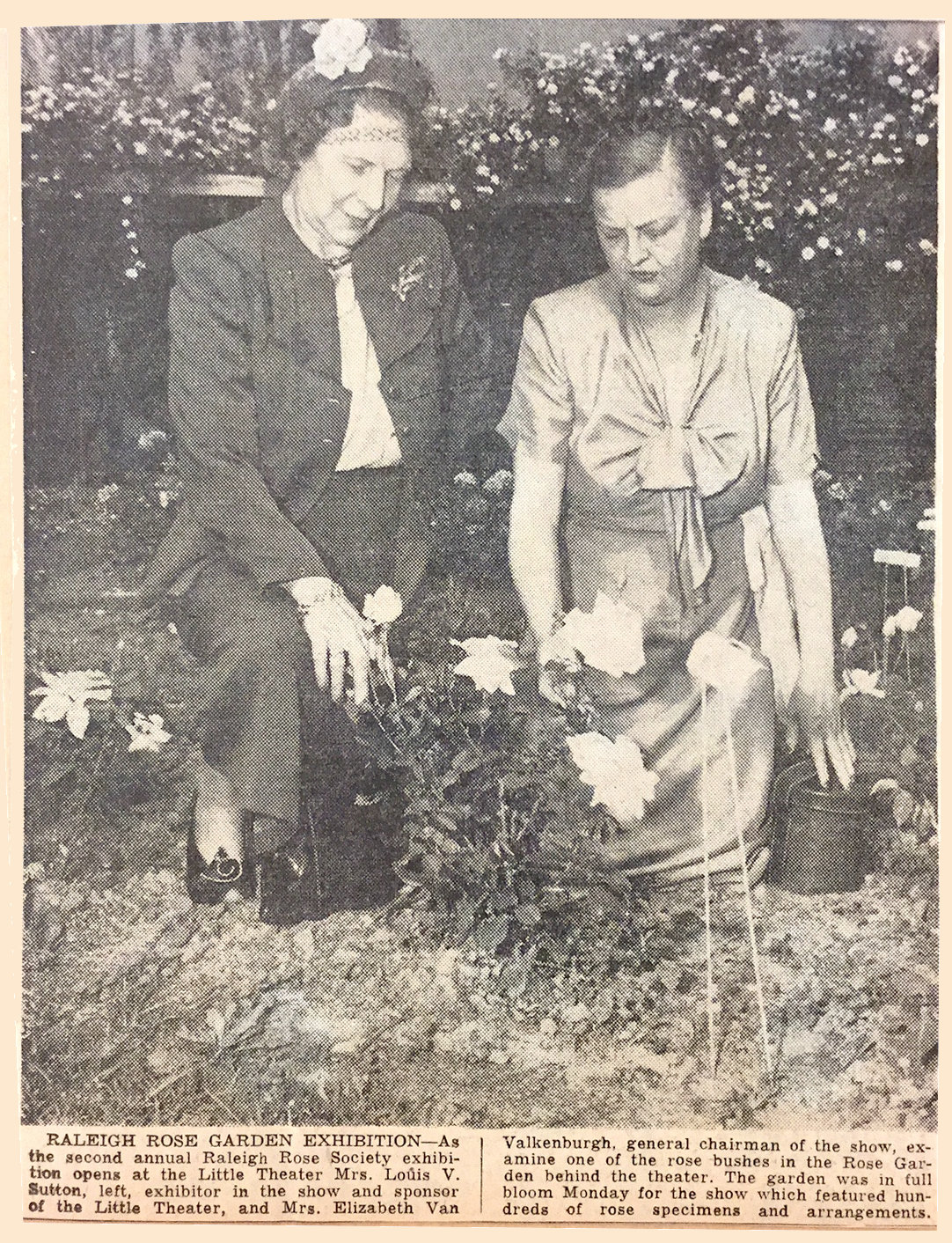
RALEIGH ROSE GARDEN EXHIBITION – As the second annual Raleigh Rose Society exhibition opens at the Little Theater, Mrs. Louis V. Sutton, left, exhibitor in the show and sponsor of the Little Theatre, and Mrs. Elizabeth Van Valkenburgh, general chairman of the show, examine one of the rose bushes in the Rose Garden behind the theater. The garden was in full bloom Monday for the show, which featured hundreds of rose specimens and arrangements.
The area that became The Raleigh Rose Garden, officially handed over to the City of Raleigh in 1951, had transformed what Raleigh Mayor George Isley described as “a very large hole in the ground, the old race track, an eyesore to the citizens and a problem to the commissioners” into what local historian Elizabeth Waugh defined as “a memorial to the social consciousness of a community, sparked by the hard work of a few and aided by the generosity of the many.” During the 1951 dedication ceremony, Raleigh Mayor P.D. Snipes accepted on behalf of the city. “I put my soul and being behind the project,” said Sutton as a “rose-embellished map of the garden” was presented to the mayor. Raleigh attorney R. L. McMillan called the garden “a vision— a reality— a civil pride.”The garden from its very beginning embodied the spirit of community collaboration and pride.
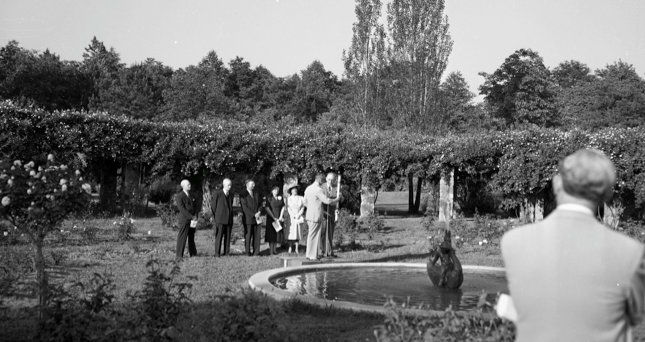
The Raleigh Rose Garden Dedication Ceremony, May 13, 1951. The original statue went missing sometime in the 1960’s. Photograph courtesy “Raleigh Garden Dedication,” The (Raleigh) News and Observer, May 14, 1951
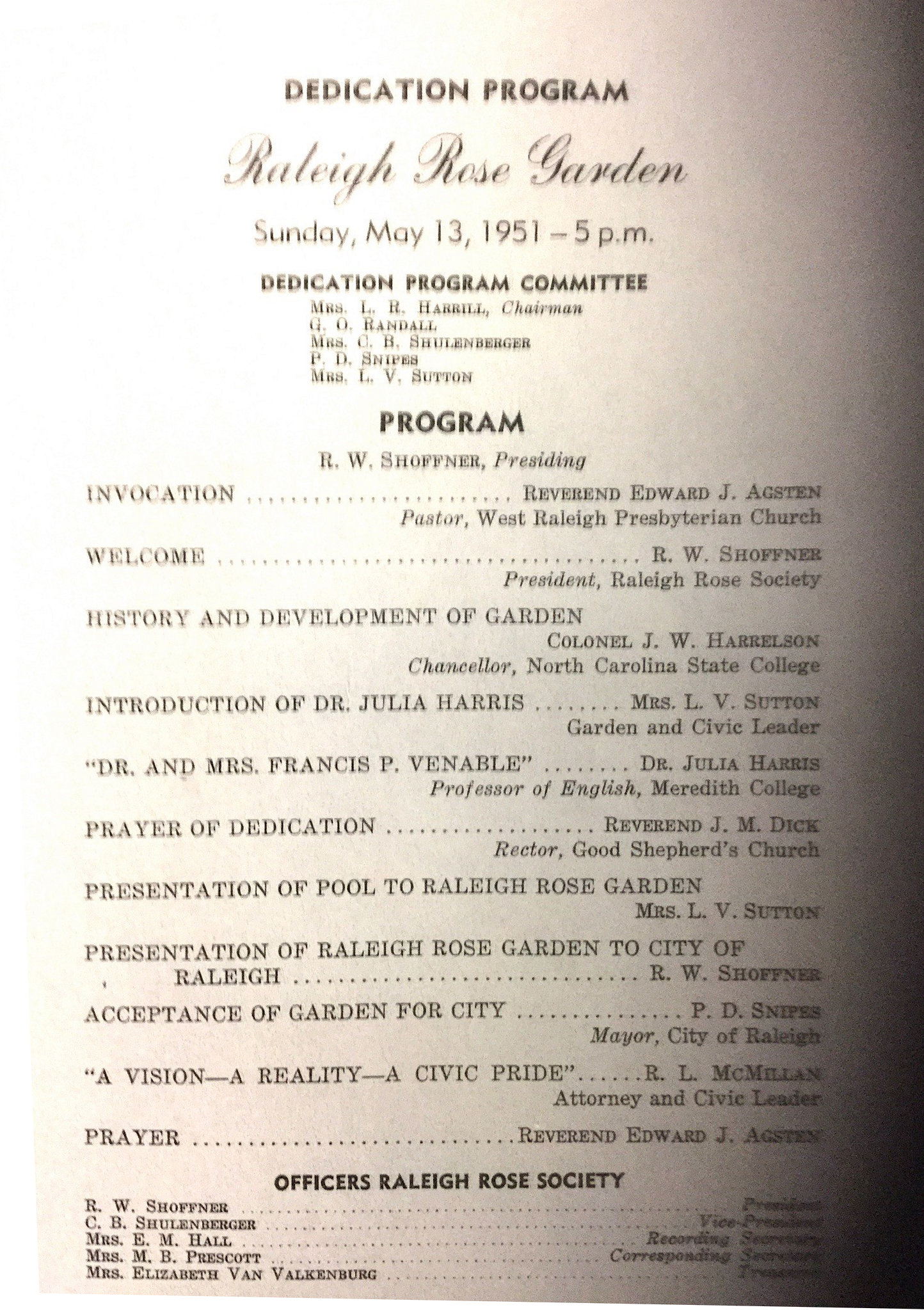
Program for the Dedication of the Raleigh Rose Garden, May 13, 1951
Image courtesy of the Raleigh Rose Garden Archives at Raleigh Little Theatre
The Garden Grows
In 1952, the garden shelter was built by John Coffey & Son Builders for less than $2,000. In 1955, the City hired Rosarian Edward Anderson from London, a graduate of the Royal Horticultural Society School and head of the Royal Botanic Garden in Edinburgh, to supervise the garden, assisted by Roosevelt Elliott. In 1957, Edwin G. Thurlow, founder of the NCSU School of Design Landscape Architecture program, drew plans for the areas surrounding the formal rose beds. “To me, there are three things of importance in this world: love, life and landscape architecture—in that order,” said Thurlow. By 1990 the garden, as part of the theatre campus, was nominated for Raleigh Historic Property Designation status.
For many years, the garden was a display destination for the All-American Rose Selection annual winner, and many select varieties still thrive in the garden. But none of the original roses still grows in the Rose Garden. While the arbor is traditionally planted with the New Dawn variety of climbing rose, by 2006 the last original rose planted when Cantey Sutton was in charge— the “Silver Moon” climbing rose— was gone. Where there were once “Show Girl,” “Farmer’s Daughter,” “Crimson Glory,” “Jimmy Cricket,” and “Nocturne,” there are now “Brigadoon,” “Marmalade Skies,” “Elizabeth Taylor,” “Reba McEntire,” “First Kiss,” “Glowing Peace,” “Starry Night,” and “Fragrant Cloud.”
The Raleigh Rose Garden Today
The Rose Garden continues to thrive as a lovely space maintained by the commitment and hard work of city employees and volunteers. The staff of the City of Raleigh’s Parks, Recreation and Cultural Resources department spends hours every day maintaining the garden with the assistance of a dedicated team of volunteer “Dead-Headers” who work tirelessly to clip the roses, weed the beds, and assist with annual and perennial plantings, mulching, and rose cutbacks. While the best time to view the roses is around Mother’s Day, the roses bloom from May until fall’s first frost in October or November. And the work is never-ending.
A Place for All Ages
In 2016, the city completed a survey of the garden complete with hardscape, lampposts, and over 160 trees. Identification for the plantings, including the rose beds, is available for public use via a web link at RaleighLittleTheatre.org, complete with plant lists and corresponding maps of the garden. Renown for its long, storied roots, the garden evolves along with the community it serves and offers a perfect location for outdoor drama, festivals, family celebrations, weddings, concerts, inspiration for artists, air and space for yoga—even a Pokémon Go Gym.
Somewhere along the way, The Raleigh Rose Garden gained a mission statement:
The preservation of this historical site through protection of its unique ecosystem, maintenance of the highest horticultural standards, and the development of new landscaped areas to create an oasis in an urban setting for people of all ages to explore and experience nature while providing a sanctuary for wildlife.
Ann Preston Bridgers, who worked alongside Cantey Sutton in the original effort to build the theatre, would have applauded the garden’s mission as in keeping with the intent of the theatre as well. Bridgers wrote: “The purpose of the Little Theatre from its very beginnings was to build a democratic organization wherein the people of the community were welcome to find recreation and creative outlet.”
Cantey Sutton would have been proud to know that the garden and theatre complex, her legacy to the city and its people, really to all North Carolinians who value their capital city, has persisted as a place of beauty, artistry, and civic pride. She last visited the garden in the 1980s with one of her granddaughters. According to then gardener Lisa Wallace, “She came dressed up in her suit and was so proper…just like her flowers… [the garden was] the way Cantey wanted it… a garden for everyone.”
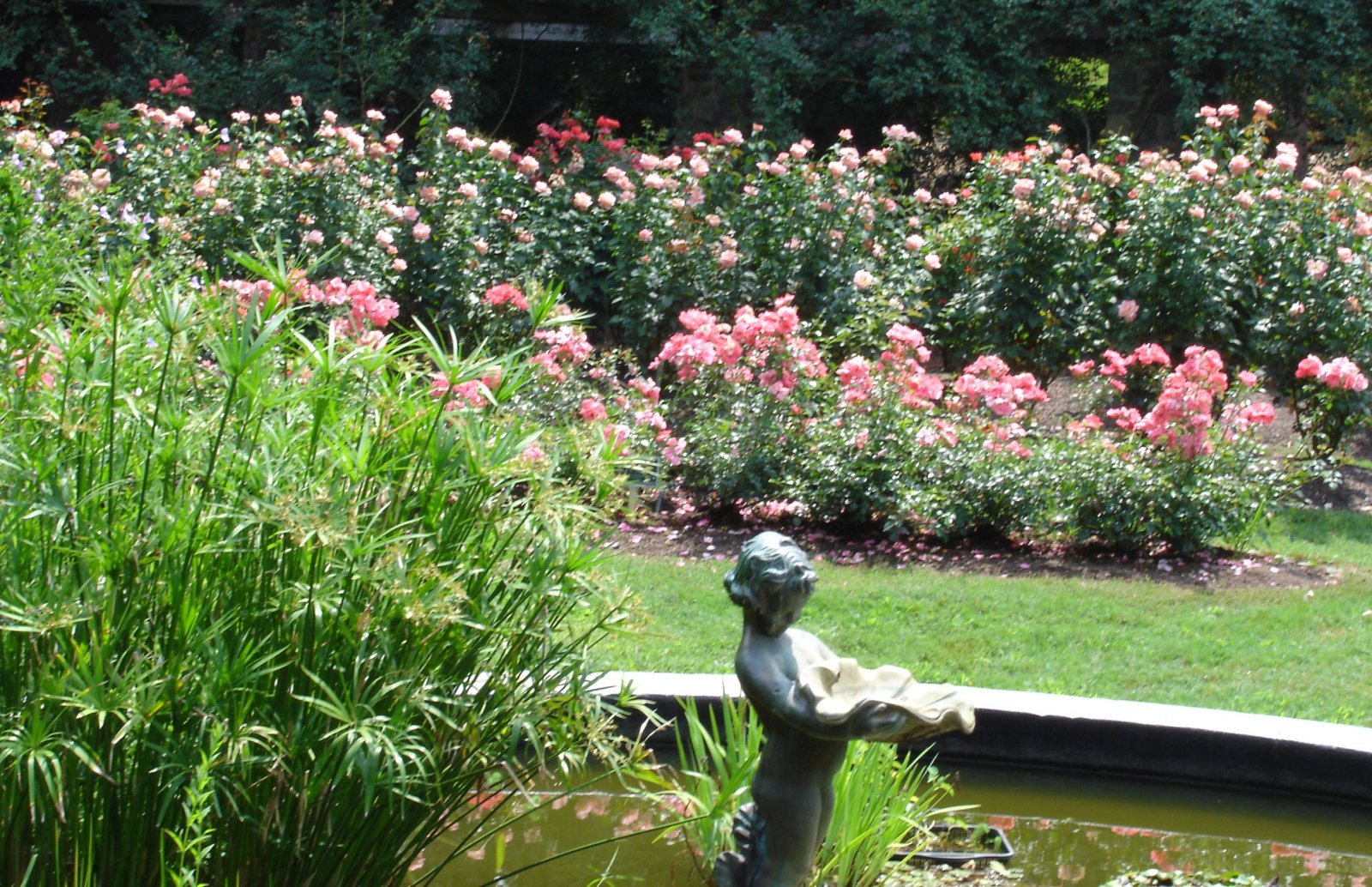
The fountain forms the centerpiece for The Raleigh Rose Garden. One of the garden’s enduring mysteries is the fate of its original statue.
Gardeners and Caretakers
Much is owed to many. Today, The Raleigh Rose Garden enjoys excellent stewardship and care from the City of Raleigh Parks, Recreation and Cultural Resources Department. In addition, a legion of dedicated volunteers known as the Dead-Headers supports the upkeep of the beds. Please stop to smell the roses and say a word of thanks when you see these people in the garden.
If you would like to volunteer, please contact:
Ashley Deans, CPRP, CAVNC
Resource Development Manager
City of Raleigh Parks, Recreation and Cultural Resources
Phone: 919-996-4810
ashley.deans@nullraleighnc.gov
Past Garden Caretakers
1948-1951: Cantey Venable Sutton, the Raleigh Little Theatre, the Raleigh Rose Society, the Raleigh Garden Club, the Raleigh Women’s Club, the Men’s Horticultural Club, the City of Raleigh, and Dr. Glenn Orvice Randall (Rose Garden landscape design and charter member of the Raleigh Rose Society)
1951-1960’s: City of Raleigh Department of Parks and Recreation and Ed Anderson, a full-time Rosarian, hired by the city in the late 1960s
1970s: Marsha Presnell-Jeanette, City of Raleigh, head gardener
1978-1997: Lisa Wallace, City of Raleigh, head gardener and later horticulturist
1997-2006: Johnna Cottrell, City of Raleigh, head gardener
2006: Leigh Bragassa, City of Raleigh, head gardener
2006: John Bento, City of Raleigh, head gardener
2006-2021: Anthony Baumgard, City of Raleigh, head gardener
2021-present: Seth Klopp, Natural Resources and Parks Crew Supervisor
Acknowledgements
Kim Anderson, Archivist, Office of Archives and History, State Archives of North Carolina Department of Natural and Cultural Resources
Jennifer Baker, Research Service Associate, North Carolina State University Libraries
Saundra R. Cropps, Library Manager, Olivia Raney Local History and Research Library, Wake County Public Libraries
Ashley Deans, Volunteer Services Coordinator, City of Raleigh Parks, Recreation, and Cultural Resources
Ernest Dollar, Executive Director, Raleigh History Museum
Duke University Library, Special Collections
Rebecca A. Hyman, Reference and Outreach Librarian, Government and Heritage Library, State Library of North Carolina, North Carolina Department of Natural and Cultural Resources
Delia Little, Supervisor, Information Center, Wake County Register of Deeds
Scott Payne, Assistant Director, City of Raleigh Parks, Recreation, and Cultural Resources
Gail G. Smith, City of Raleigh, Clerk and Treasurer
Gwyneth Thayer, Associate Head and Curator, Special Collections Research Center, North Carolina State University Libraries
Jimmy Thiem, Vice President, HAGERSMITH Design, PA, Raleigh, N.C.
Susan Trimble, Publications Branch, Historical Research Office, North Carolina Department of Natural and Cultural Resources
Cynthia Trumbower, Retired, Volunteer Services Coordinator, City of Raleigh Parks, Recreation, and Cultural Resources
Lisa Wallace, Retired, Rose Garden, Head Gardener and Horticulturalist, City of Raleigh Parks, Recreation, and Cultural Resources
